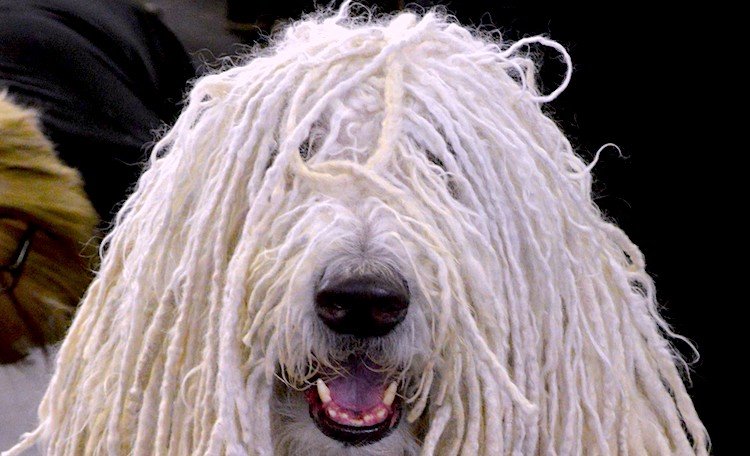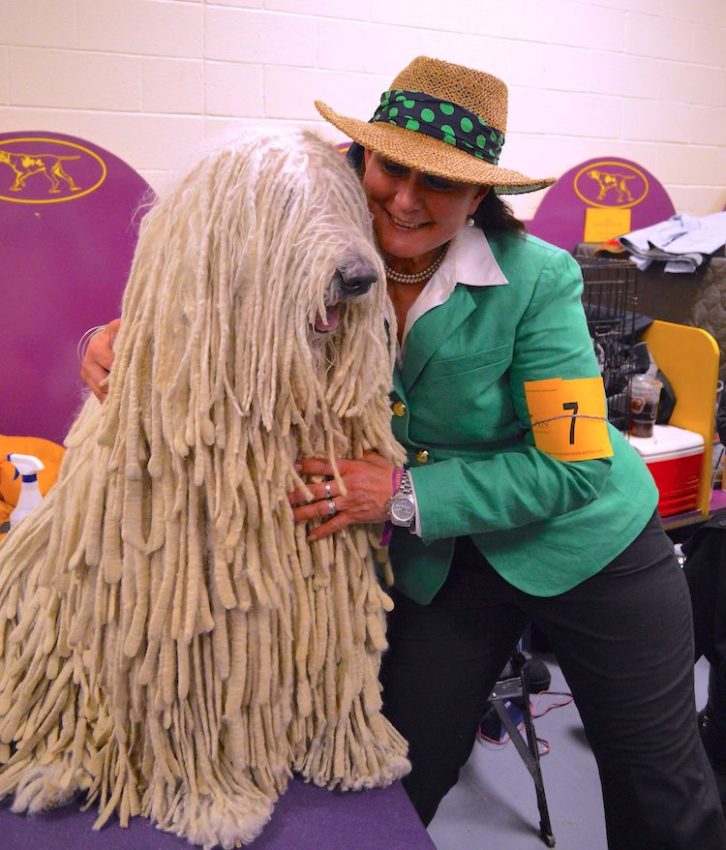
Working
80-100 lbs.
25.5-27.5 in.
10-12 years
1. Key Characteristics of a Komondor
The Komondor (plural: “Komondorok”) is a large, muscular dog known for its thick, corded coat resembling a mop.
These dogs have great speed, power and agility despite their size and heavy coat.
Komondorok are guard dogs, not herders. They are wary of strangers but affectionate and protective of their family.
2. Where the Komondor Comes From
Although the ancient Komondor breed has Hungarian roots, the dogs may have descended from similar Russian dogs brought into the country by an invading army.
Documents referencing the Komondor date to the 16th century, and large sheepdogs were mentioned even earlier.
The dogs were imported to the United States, and the American Kennel Club (AKC) recognized the breed in 1937. Importation was stalled during World War II, and the Komondor almost became extinct in Europe.
The breed was restored, and importation to the United States resumed in 1962.

3. How Friendly Is a Komondor?
Love and protection from a Komondor can be like benefits to an exclusive club.
Once a Komondor accepts you, you’re in that dog’s inner circle for life. Many people report that their Komondor remembers someone they met only once years ago.
Komondorok are wary of strangers, fearless and watchful, and they thrive on responsibility. They are happiest when protecting someone or something else.
They are usually calm and quiet — unless they perceive a threat.
A bored, untrained or insufficiently exercised Komondor can become stubborn and aggressive when meeting people.
4. Is This the Right Dog for You?
Exercise Needs
MEDIUM: Your Komondor needs daily exercise, obedience training and reinforcement.
This breed does well in most climates and can live the apartment life with regular, daily exercise.
Grooming Needs
HIGH: Don’t brush or comb your Komondor’s corded hair, but do trim it regularly.
Regular bathing comes with a long drying time. On the upside, these dogs shed little and may be good for people who have allergies.
Trim and clean the ears of your Komondor now and then to prevent infections (the ears hang down and prevent air circulation). Clip the fur between the paw pads regularly as well.
And, as always, clip the dog’s nails and establish a regular toothbrushing routine.
Health Problems
MEDIUM: As with any large breed, Komondorok may experience hip dysplasia and bloat. They have a low incidence of genetic diseases, but they may be susceptible to the following conditions:
- Entropion (eyelid curling inward)
- Juvenile cataracts
- External parasites (due to coat type)
- Sensitivity to flea and tick medications and anesthesia
More Stats About the Komondor
| Friendliness | ★★★☆☆ |
| Ease of Training | ★★★★☆ |
| Barking/Howling | ★★★★★ |
| Shedding | ★★★☆☆ |
| Tolerates Being Alone | ★☆☆☆☆ |
| Very Good With Kids | ★★★☆☆ |
Get a little more info on these beautiful dogs in this video:

5. How to Adopt a Komondor
If you’re interested in adding a Komondor to your family, please check rescues and adoption resources first. Did you know that even purebred animals can end up in shelters? Try Petful’s adopt search.
You can also check with rescue groups and breeders — and ensure that the breeder is reputable.
References
- “Komondor.” American Kennel Club. https://www.akc.org/dog-breeds/komondor/.
- “About the Komondor.” Komondor Club of America. https://komondorclubofamerica.org/about-the-komondor/.
- Levy, Joy C. “Going Over a Komondor.” Komondor Club of Great Britain. http://www.komondorclubofgb.co.uk/going-over-a-komondor-by-joy-c-levy/.








